What to see and do in Saxony-Anhalt? This German federal state offers everything from picturesque half-timbered towns and beautiful parks to dramatic scenery and locally produced wine. Not to mention history, culture and design!
Table of contents
Saxony-Anhalt
Last summer, we travelled around Saxony-Anhalt in our motorhome and managed to visit a variety of exciting and interesting places. We have now put together a guide to the federal state, which we present in co-operation with the German Tourist Board.
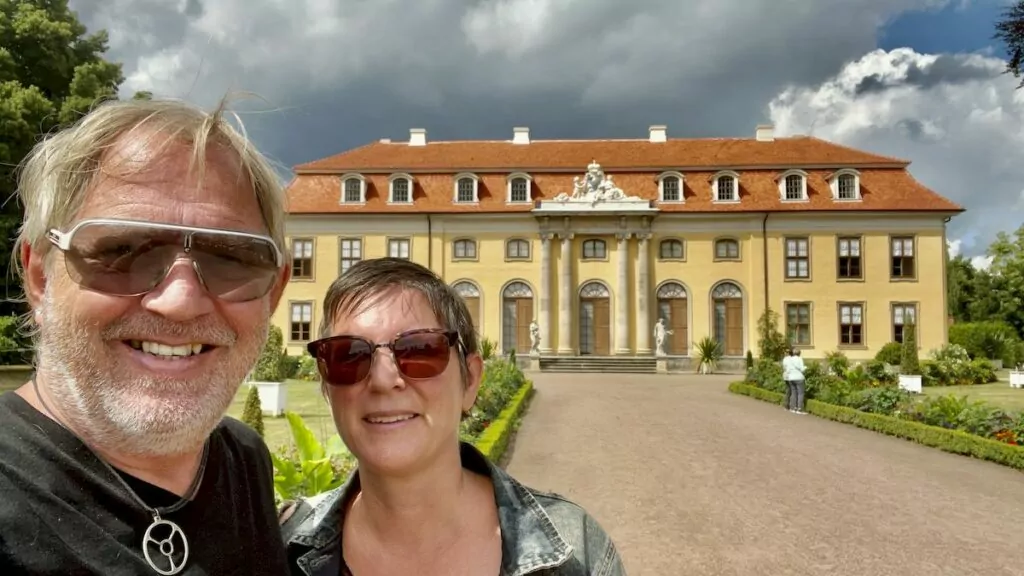
Saxony-Anhalt is located just north-east of the centre of Germany. The capital of the state is Magdeburg, and other major cities include Halle an der Saale and Dessau-Rosslau.
What can you see and do in Saxony-Anhalt?
So what is there to see and do in Saxony-Anhalt? The fact is that this region offers a great variety of experiences. Here you will find our best tips in a list. Further down, you will also find tips on events.
1. See architecture in Magdeburg
Magdeburg is sometimes referred to as the 'Otto City' because of two very different Ottos who were important in its history: Emperor Otto I in the 10th century and inventor and politician Otto von Guericke in the 17th century.
The city is 1200 years old and offers everything from Romanesque architecture to memories of the GDR. You'll also find the impressive cathedral, the stunning green citadel designed by Friedensreich Hundertwasser and the Elbauenpark, with its very special Millennium Tower. Not to be missed:
- Magdeburg Cathedral
- The Green Citadel
- Elbauenpark with Jahrtausendturm
Parking space for motorhomes: If you're travelling by campervan, you can stay overnight at "Am Winterhafen", which is well located and has all the services you need. Another central alternative, but without services, is Petriförder.
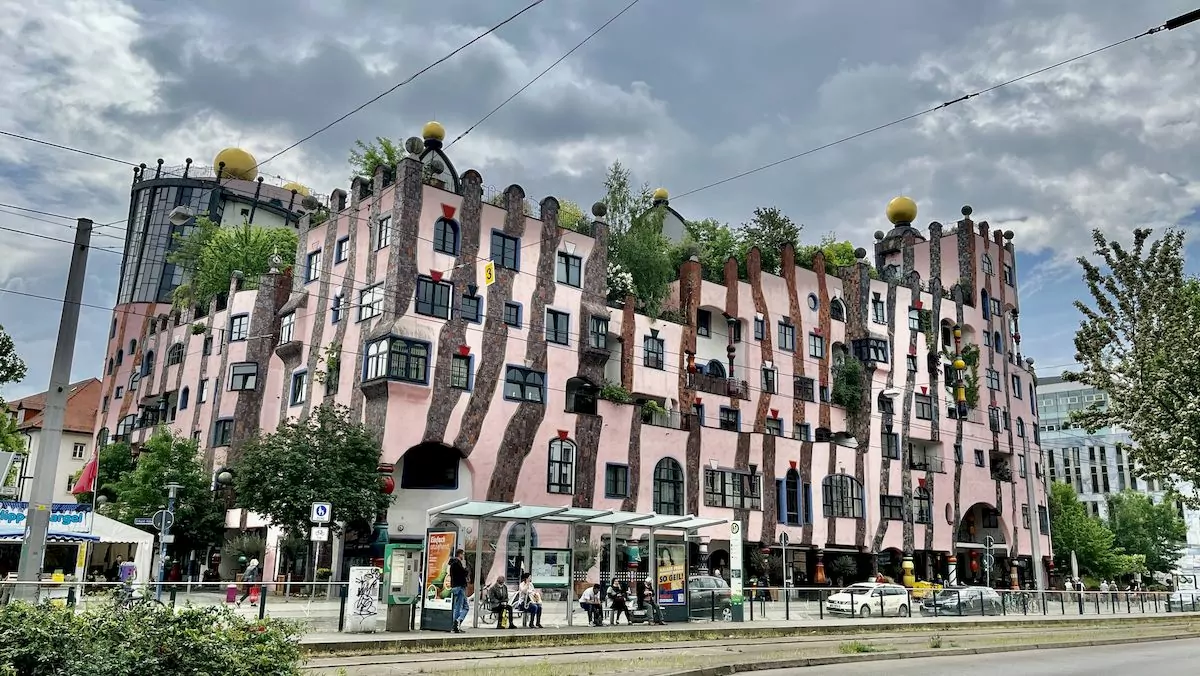
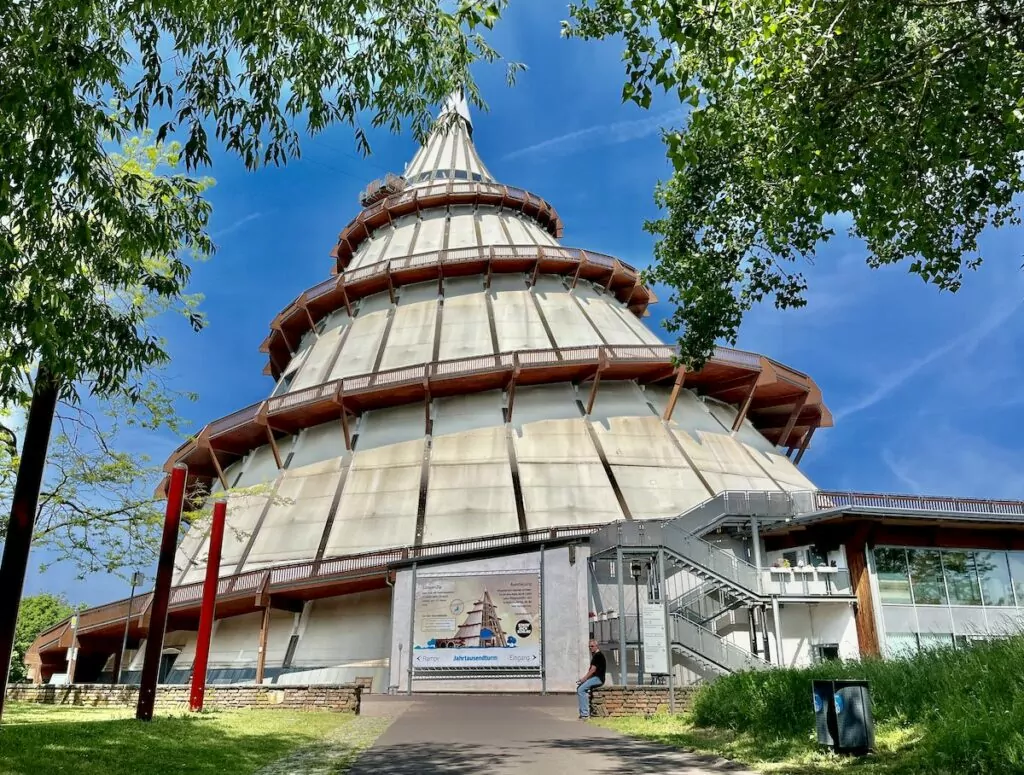
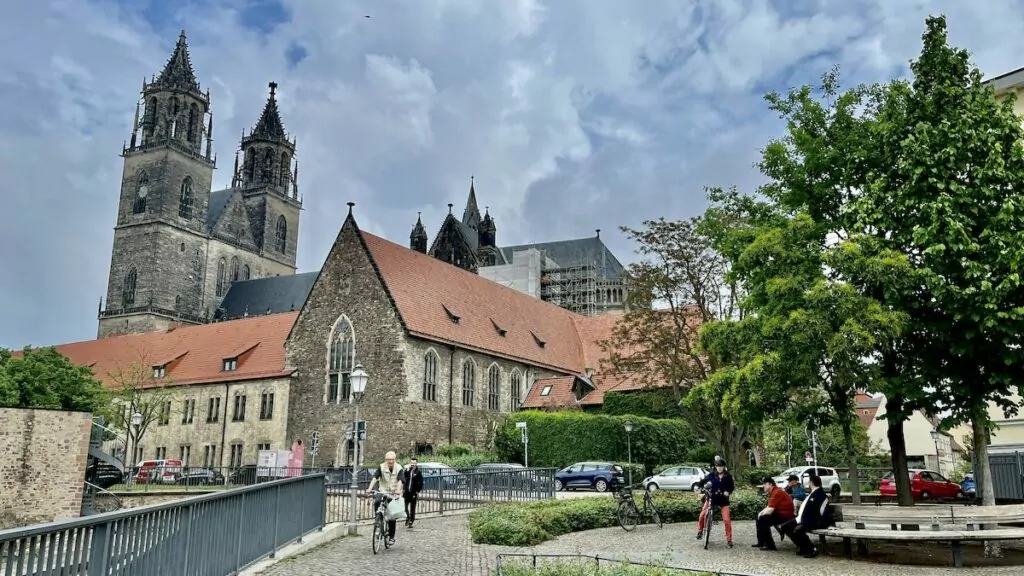
2. Strolling in the crossroads town of Quedlinburg
Quedlinburg is a wonderfully picturesque little town with around 1300 half-timbered houses. The town is also a UNESCO World Heritage Site because of its 'rare example of a medieval European town'. The old half-timbered house Ständerbau houses a museum that tells the history of half-timbered architecture from the 14th to the 19th century.
Quedlinburg's Castle Hill is home to the castle and St Servatius Abbey Church. You can also enjoy the view from the Münzenberg or simply stroll through the charming neighbourhoods, cafés and delicatessens. Don't miss:
- The Corsican Museum in Ständerbau
- Slottsberget with the castle and the abbey church
- Mountain of coins
Parking space for motorhomes: There is a centrally located site at the "Schlossparkplatz" on Schenkgasse. It looks like a normal car park, but it also has most of the services a motorhome needs, including electricity.
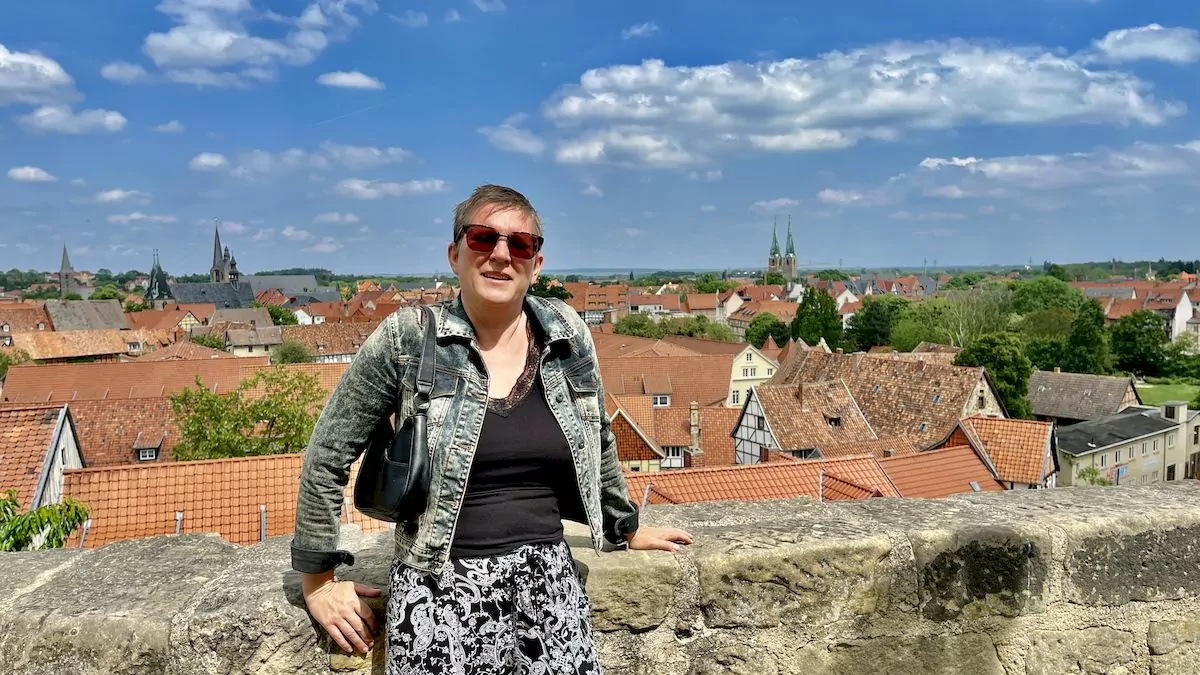
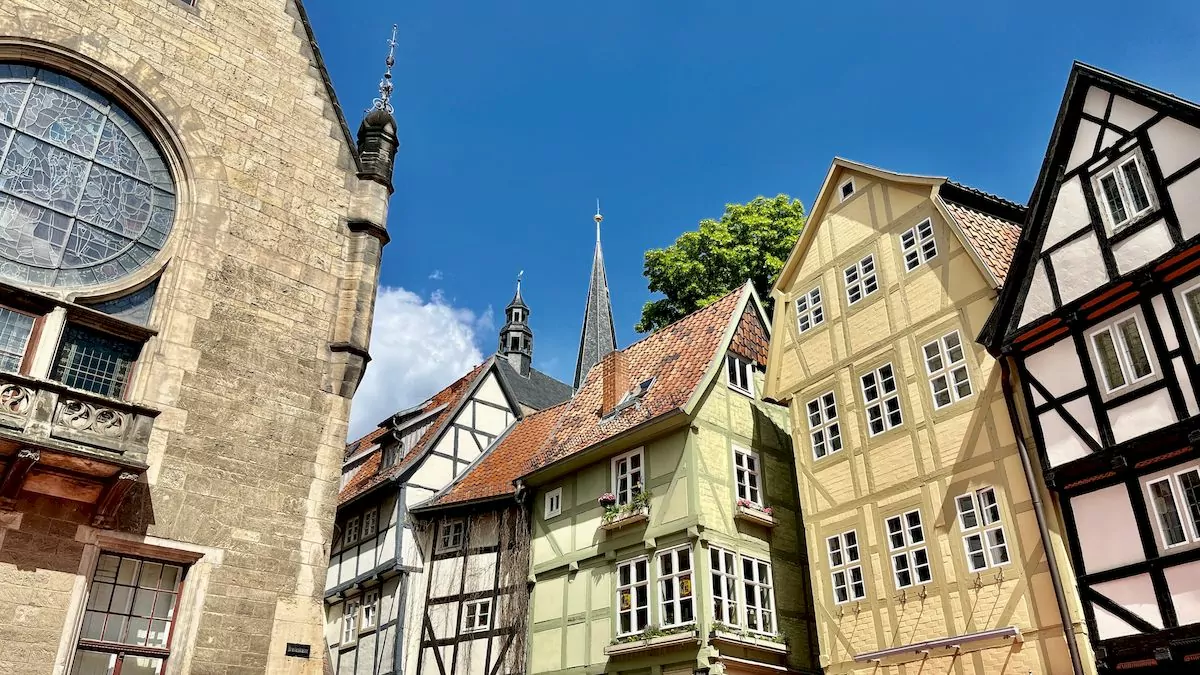
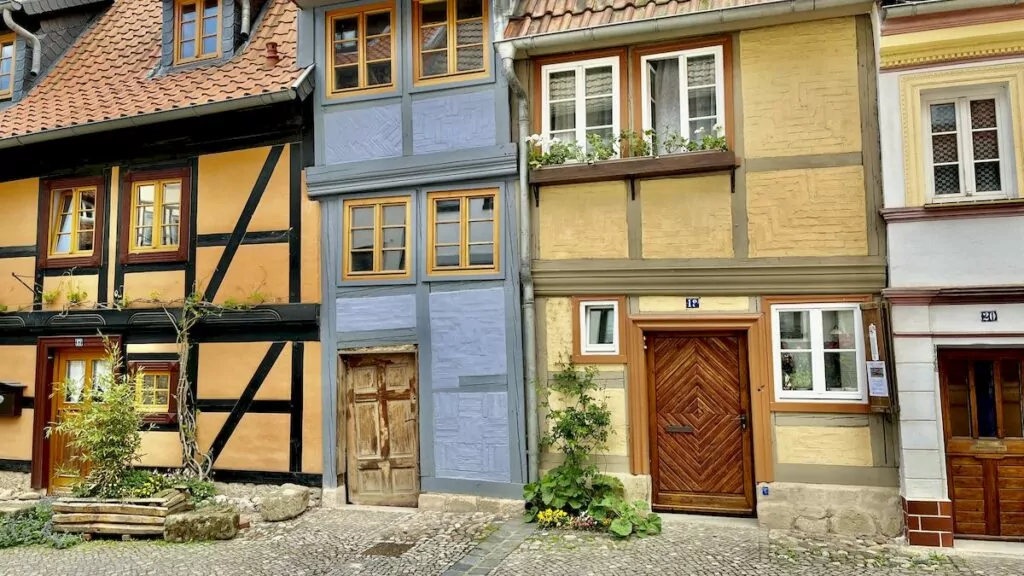
3. Experience Regenstein Castle
Regenstein Castle is a historic ruined castle in Blankenburg in the Harz mountains. The castle was built in the Middle Ages on a 294 metre high sandstone cliff to be impregnable to enemies. The Regenstein Counts lived here until the 15th century, when they moved to Blankenburg Castle and Regenstein fell into disrepair.
Today, you can visit the ruins of the castle and fantasise about times gone by. There are also several hiking trails nearby, including the "Heers" site, which is filled with sandstone caves. Not to be missed:
- Castle ruins with a view
- Hiking trails
- Sandstone caves in Heers
Parking space for motorhomes: Not far from Regenstein Castle is the "Parkplatz am Schnappelberg", at Schnappelberg 2 in Blankenburg. It has electricity, toilets and fresh water.
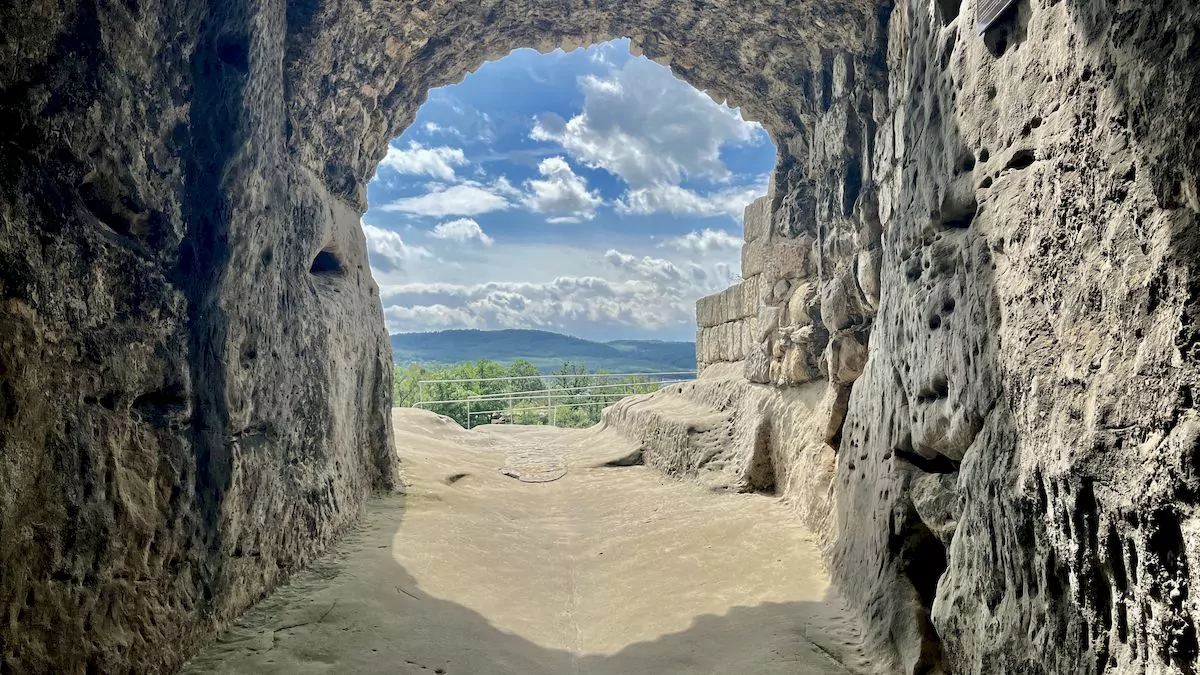
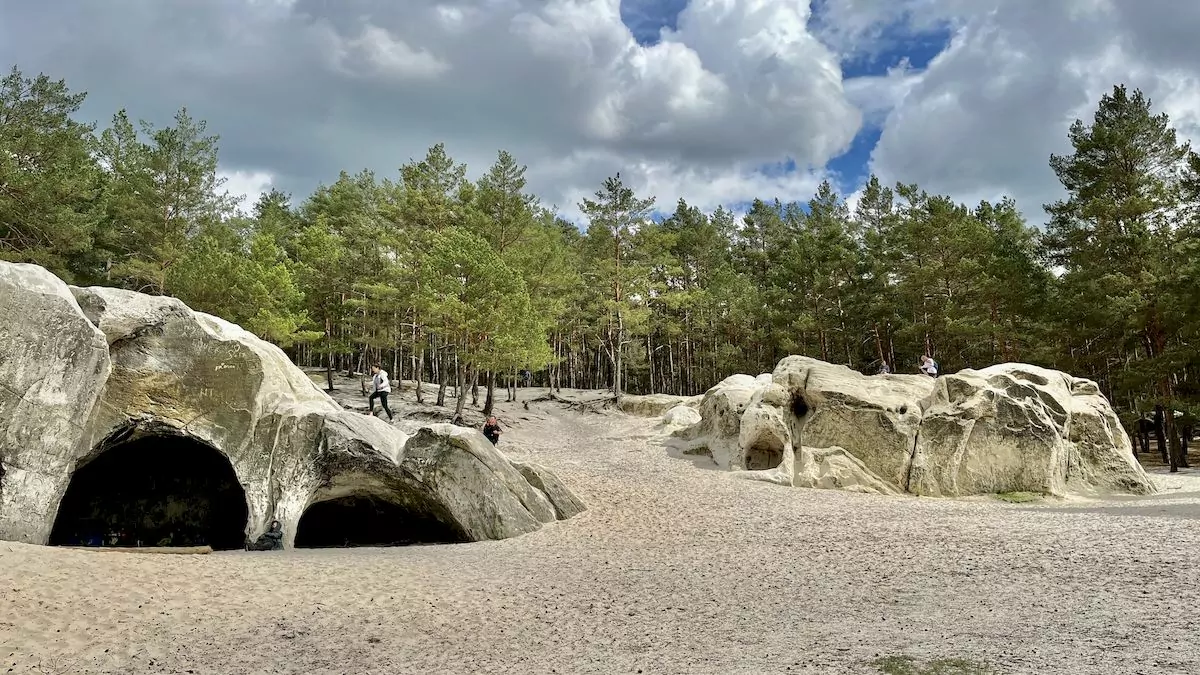
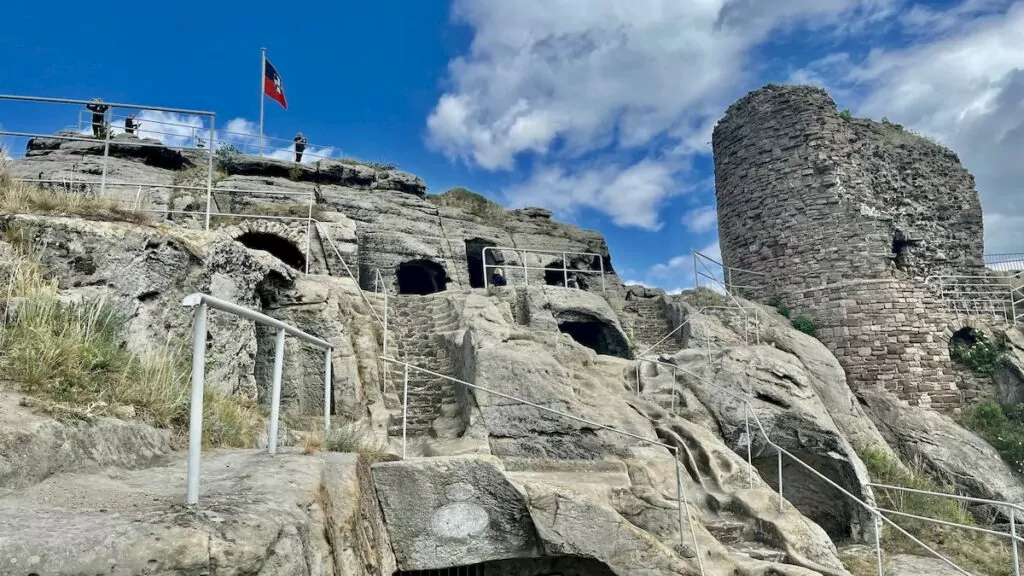
4. Take the train to Brocken from Wernigerode
Wernigerode is another fantastic and picturesque half-timbered town in Saxony-Anhalt. Here you can stroll through cosy alleyways and check out the peach-coloured town hall, which looks almost like something out of a fairy tale. You can also make your way to Wernigerode Castle, which sits on a hill with great views.
Wernigerode can also serve as a starting point for taking the 'Harzer Schmalspurbahnen', chugging behind a steam locomotive all the way to the top of the Brocken at an altitude of 1141 metres. The journey, which takes just under two hours, is a very popular adventure in Saxony-Anhalt. Don't miss out:
- Town hall in Wernigerode
- Wernigerode Castle
- Harzer Schmalspurbahnen
Parking space for motorhomes: The Katzenteich site, at Am katzenteich 10, is in an excellent location for visiting the city. It also has most of the services you need, including electricity.
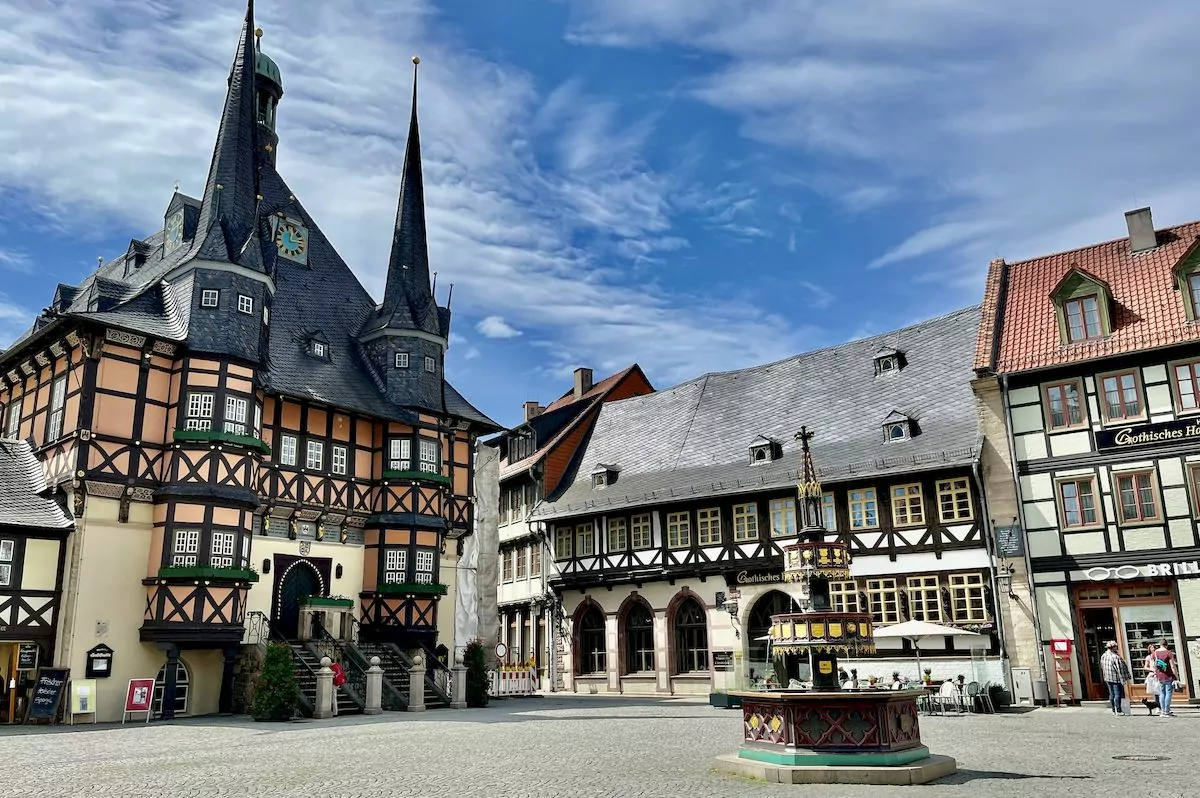
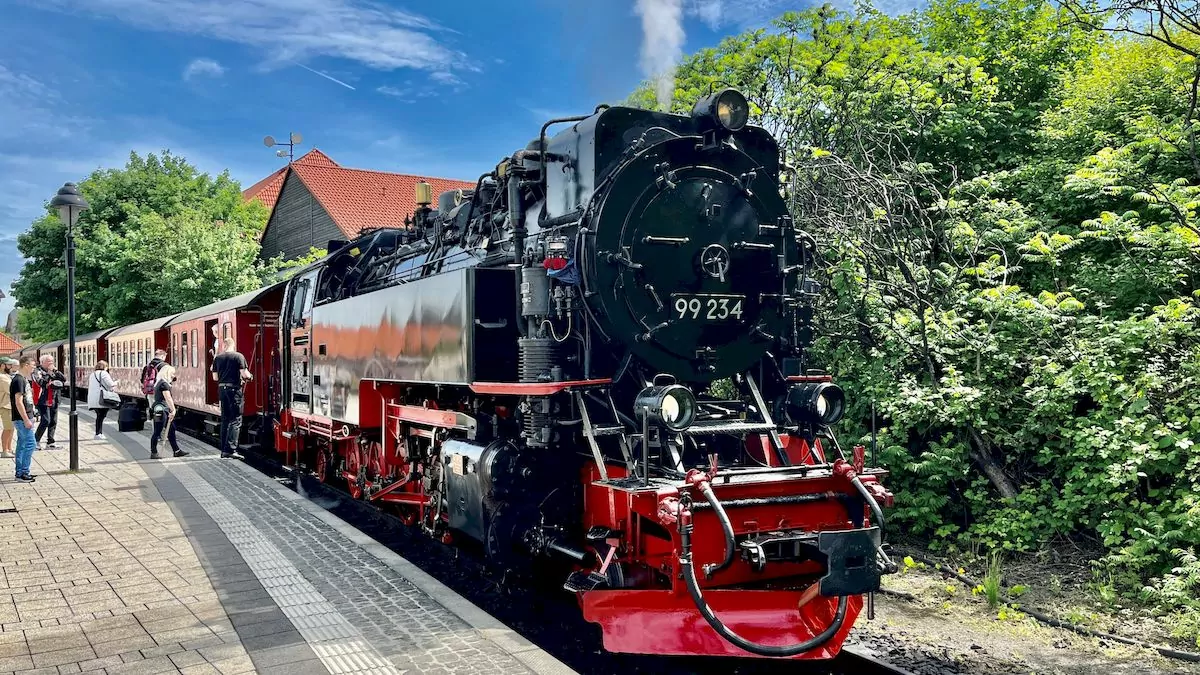
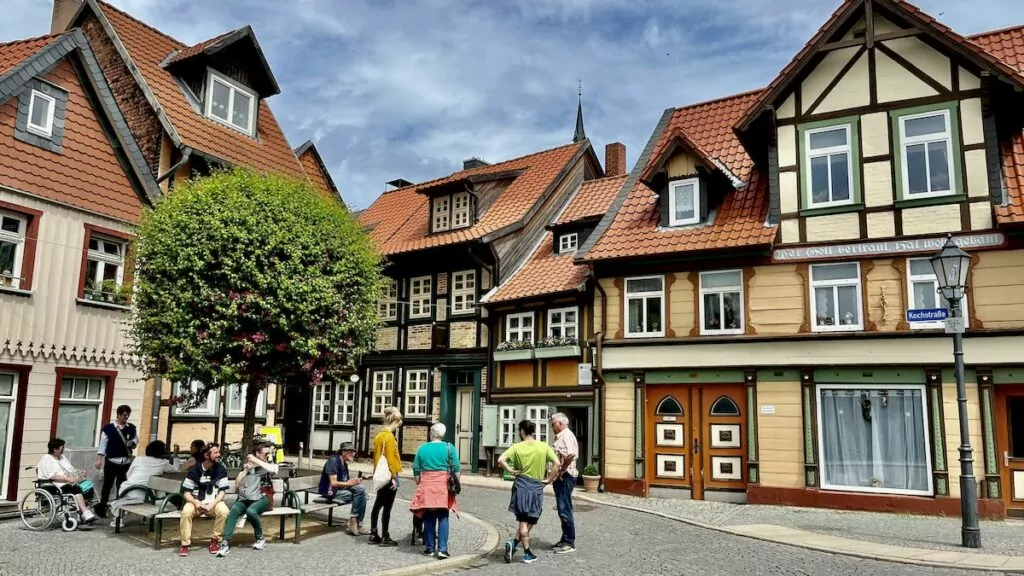
5. Walk on Germany's longest suspension bridge
One thing you won't want to miss doing in Saxony-Anhalt is walking on Germany's longest pedestrian suspension bridge. The 483 metre long bridge, called Titan RT, crosses the Rappbode valley and pond in the Harz. You have great views from the bridge, as well as great views of the bridge itself both from the road that crosses the dam and from the hill above.
If you are not satisfied with walking across the bridge, you can try various action-packed adventures such as ziplining or 'gigaswing', which is a variant of bungee jumping. Right next to the bridge is also the 39 metre high 'Solitaire' observation tower, where you can go up with a catapult and down via 'wall running'. Not to be missed:
- Walk on the Titan RT bridge
- Zipline or Gigaswing
- Solitaire observation tower
Parking space for motorhomes: Near the bridge there is a car park called Reiterhof an der Talsperre. The site has electricity and other services.
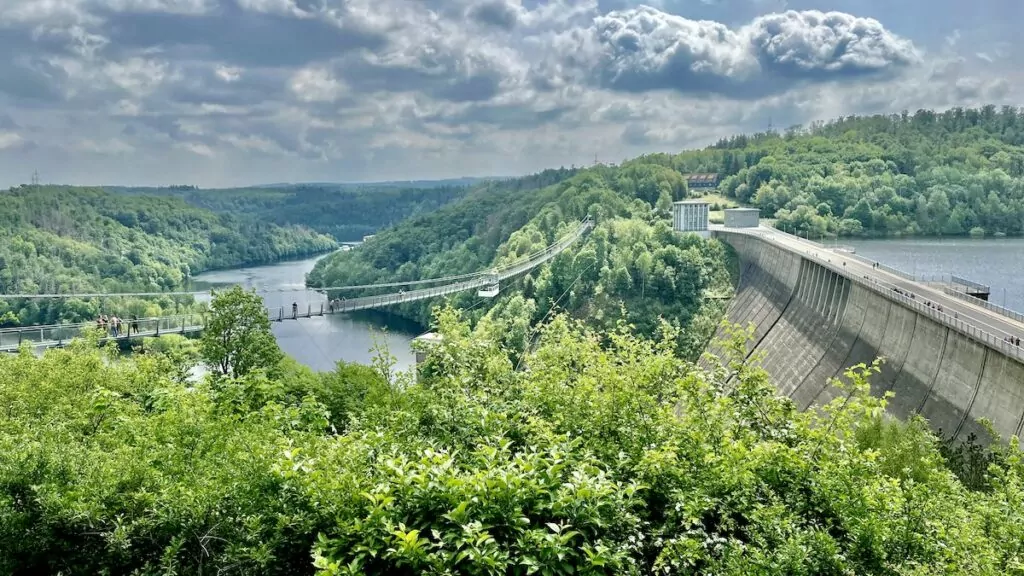
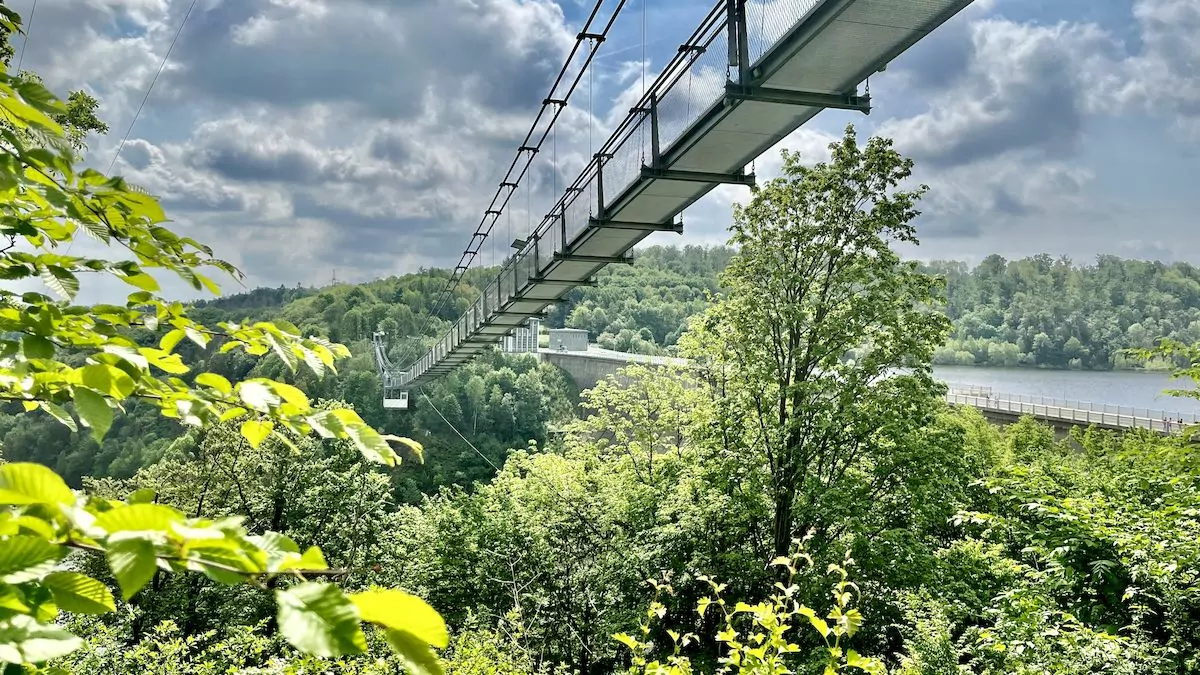
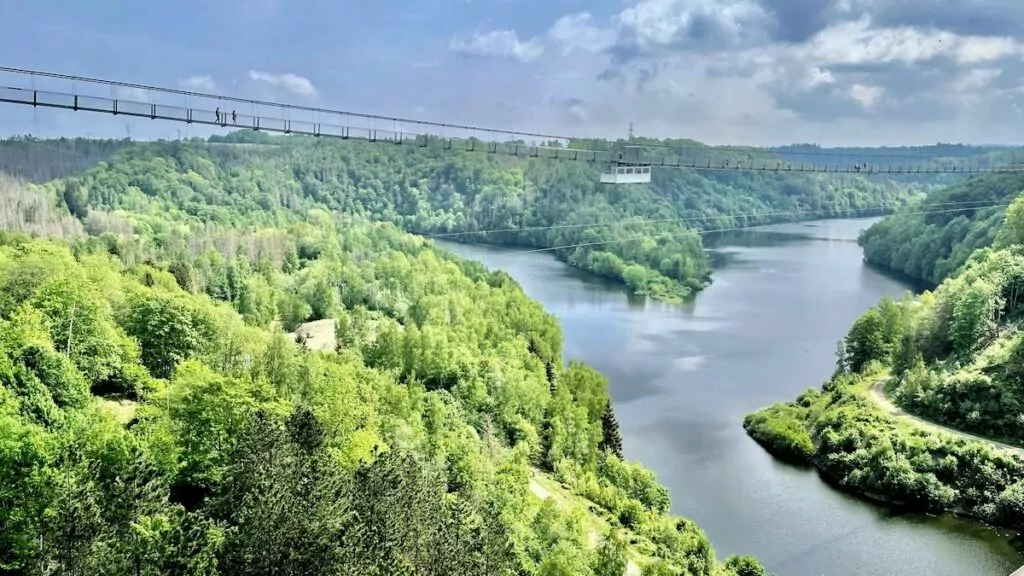
6. Meet witches in Thale in the Harz Mountains
Thale is a small town in the Harz Mountains, which serves as a perfect starting point for several wonderful adventures in nature. From here you can get to the popular Hexentanzplatz, or "Witches' Dance Place". If you wish, you can start with a lift ride and then alternate hiking with a visit to the Witch House, for example.
In Thale you can also hike around the Teufelsmauer (Devil's Wall). This hike offers spectacular views of four dramatic mountain ridges. The scenery here is just as spectacular as the name suggests. Don't miss out:
- Witch's dance floor
- The witch's house
- Devil's Wall
Parking space for motorhomes: Klostercamping Thale, at Wendhusenstrasse 3, has an excellent location for the Teufelsmauer. Parking An der Hütte, at An der Hütte, has no services, but is in an excellent location for visiting Hexentanzplatz by lift.
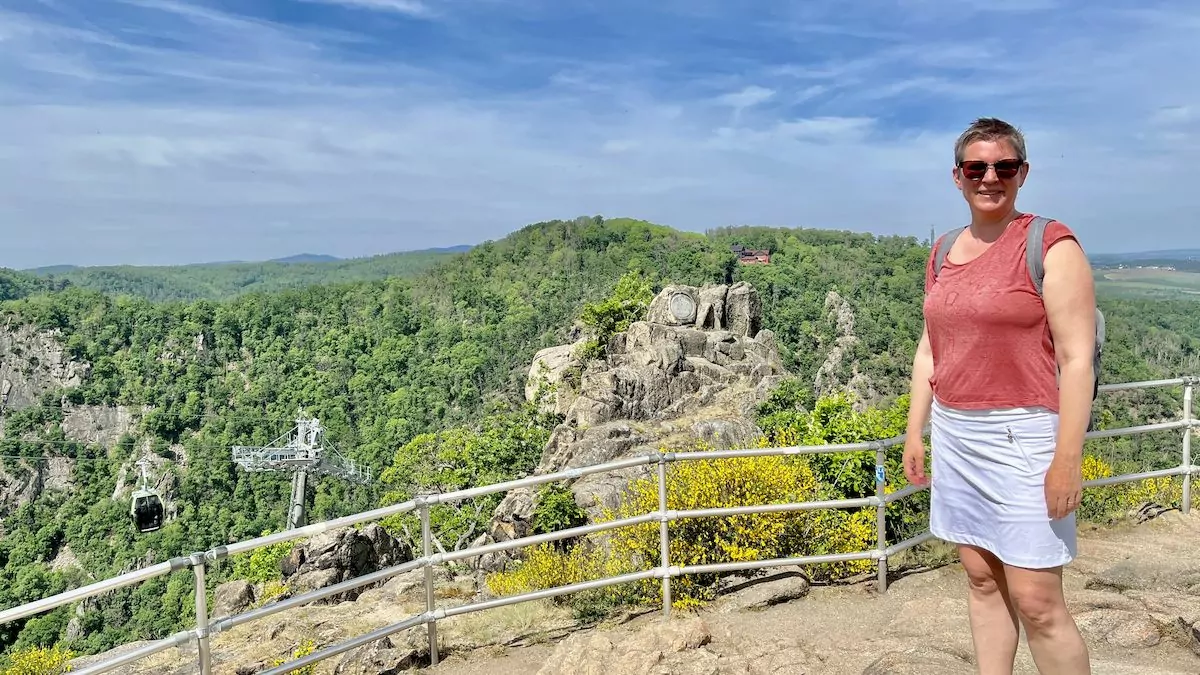
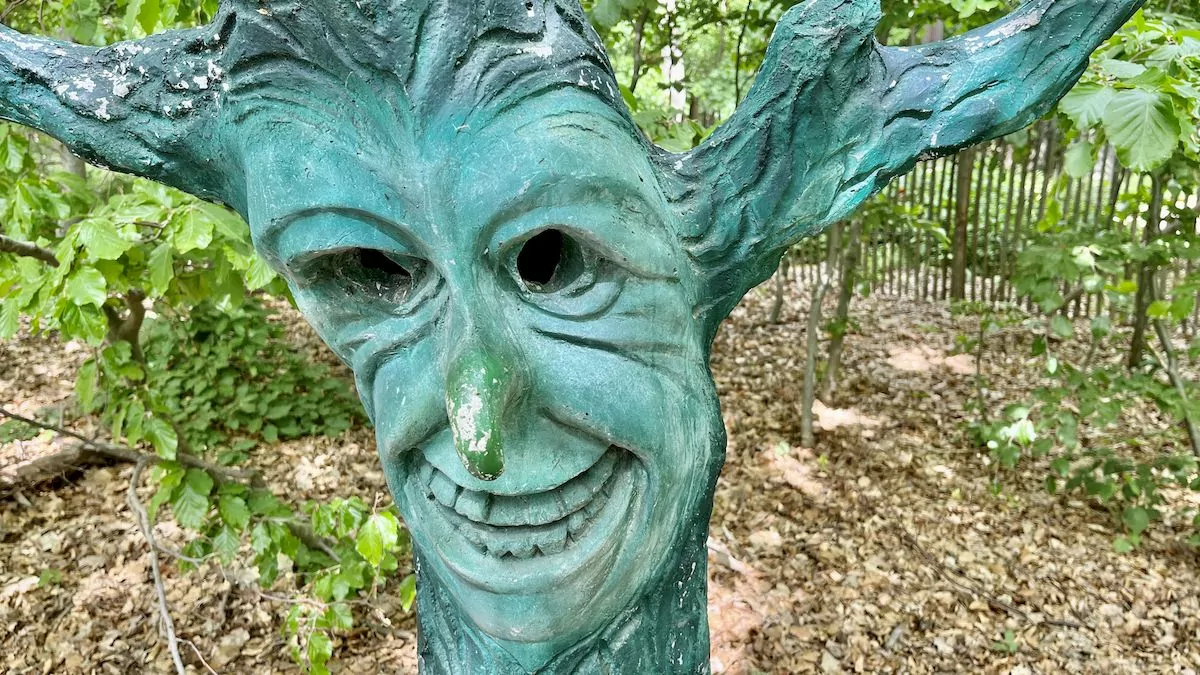
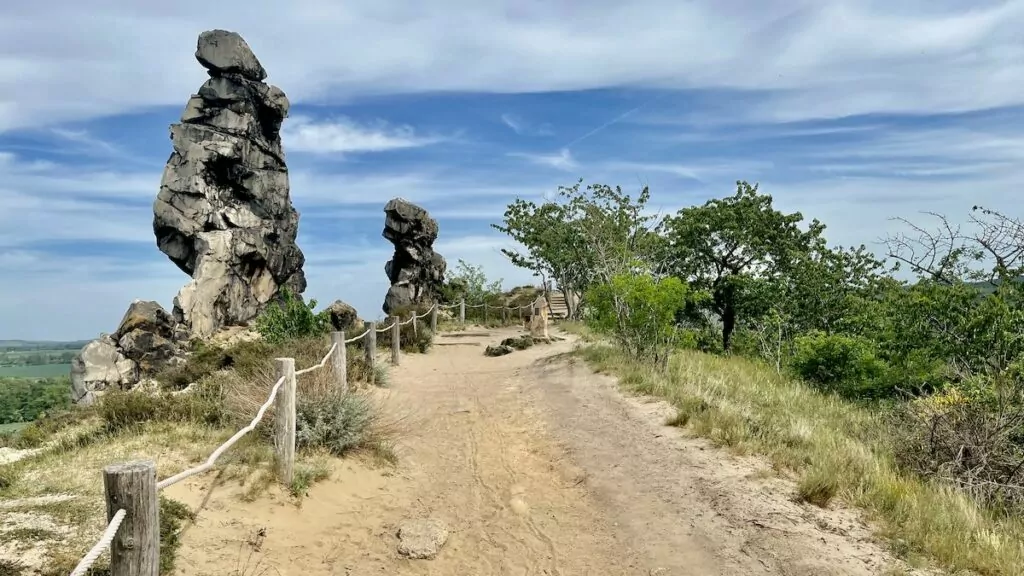
7. Explore Bauhaus design in Dessau
If you are interested in design, you can't miss Dessau, or Dessau-Rosslau as the municipality is actually called. It was here that the German design school and design movement Bauhaus developed, which later led to what we call 'funkis'. Dessau is home to no less than 300 Bauhaus buildings and three UNESCO World Heritage sites.
Today you can visit the Bahaus School, the House of the Masters and the Bauhaus Museum. There are also several nice parks and castles in the area, such as Mosigkau Castle and Oranienbaum Castle and Castle Park. Not to be missed:
- House of Masters
- Bauhaus Museum
- Oranienbaum Castle and Castle Park
Parking space for motorhomes: The Seesportverein Dessau, at Leopoldshafen 4, is a small and cosy place nicely located on the Elbe. It has all the services you need, including electricity. You can also park at Flugplatz Hugo Junkers.
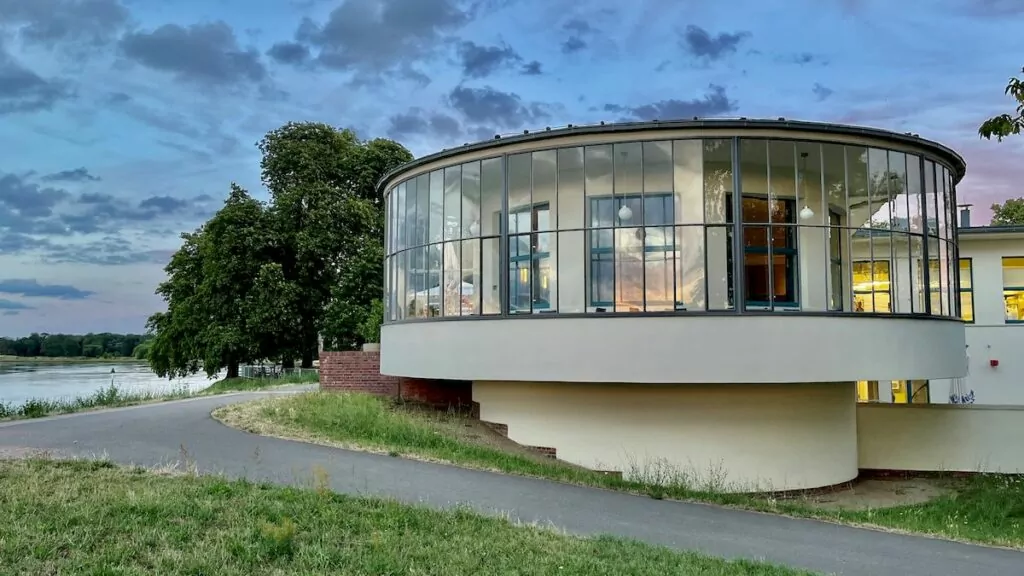
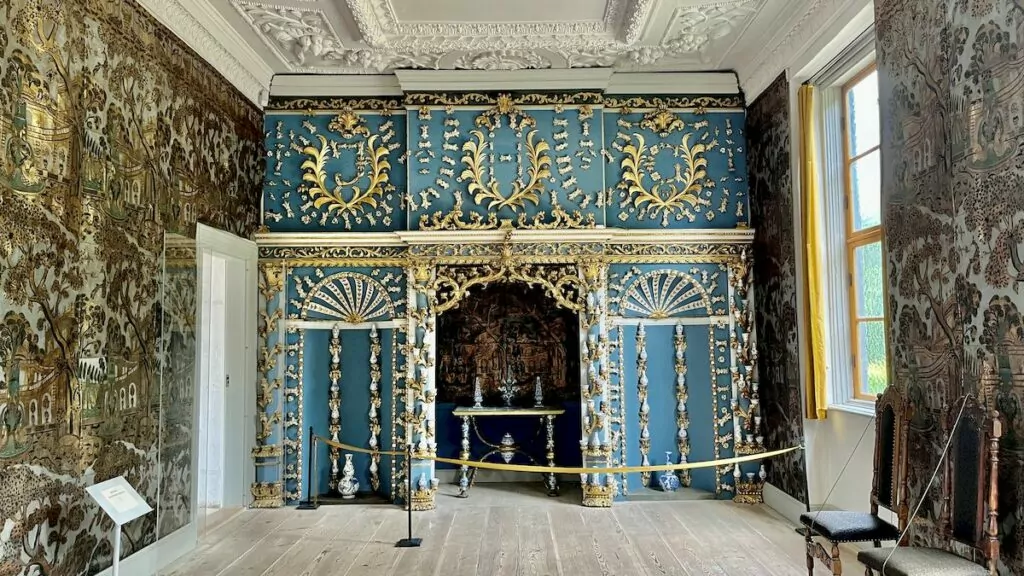
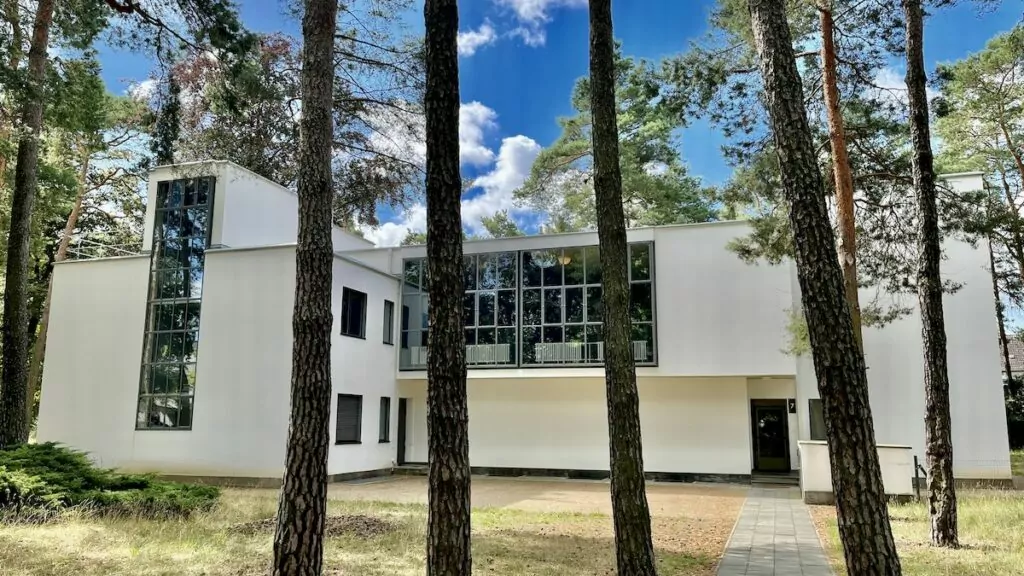
8. Walk in Wörlitzer Park
Wörlitzer Park is part of the Dessau-Wörlitz Garden Kingdom, designated a UNESCO World Heritage Site for its exceptional example of landscape design during the Enlightenment. The park is huge and full of surprises.
Throughout the park you can discover bridges, caves, statues and monuments. You can also see the Gothic House, Wörlitz Castle and Stein Island with Villa Hamilton and an unusual attraction in the form of an artificial volcano. Not to be missed:
- Gothic house
- Wörlitz Castle
- Ön Stein
Parking space for motorhomes: Grossparkplatz Seespitze, on Coswiger Strasse, is in a great location for visiting the site. There are many pitches, and electricity is available at the sites.
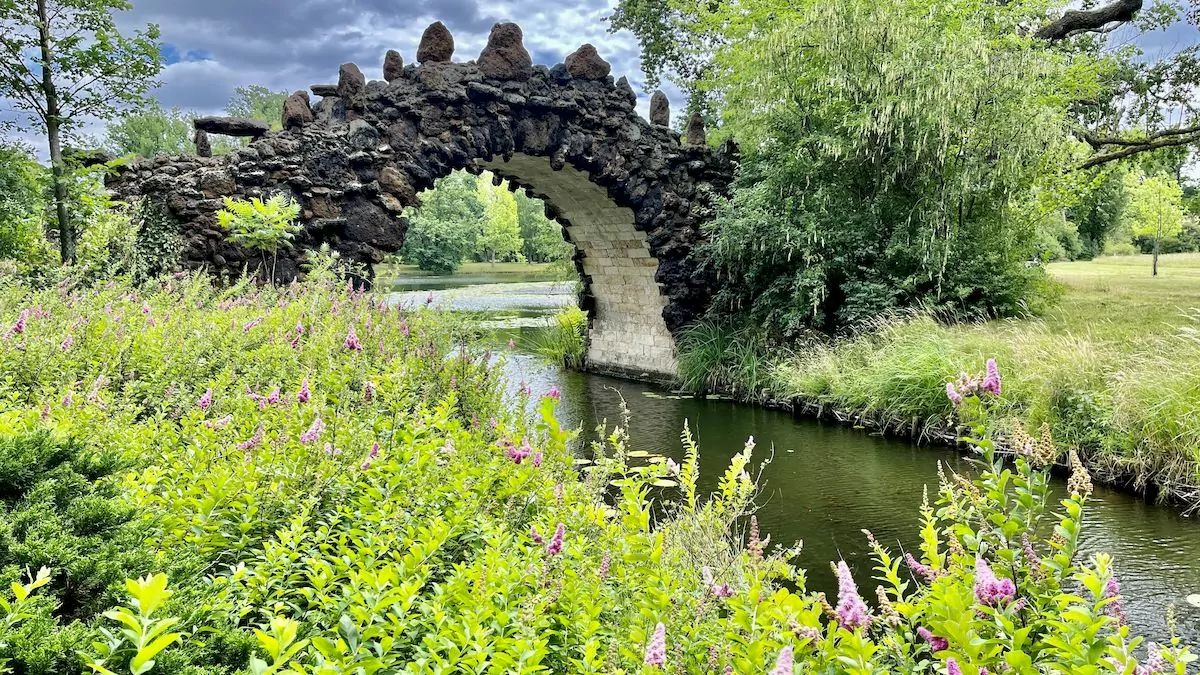
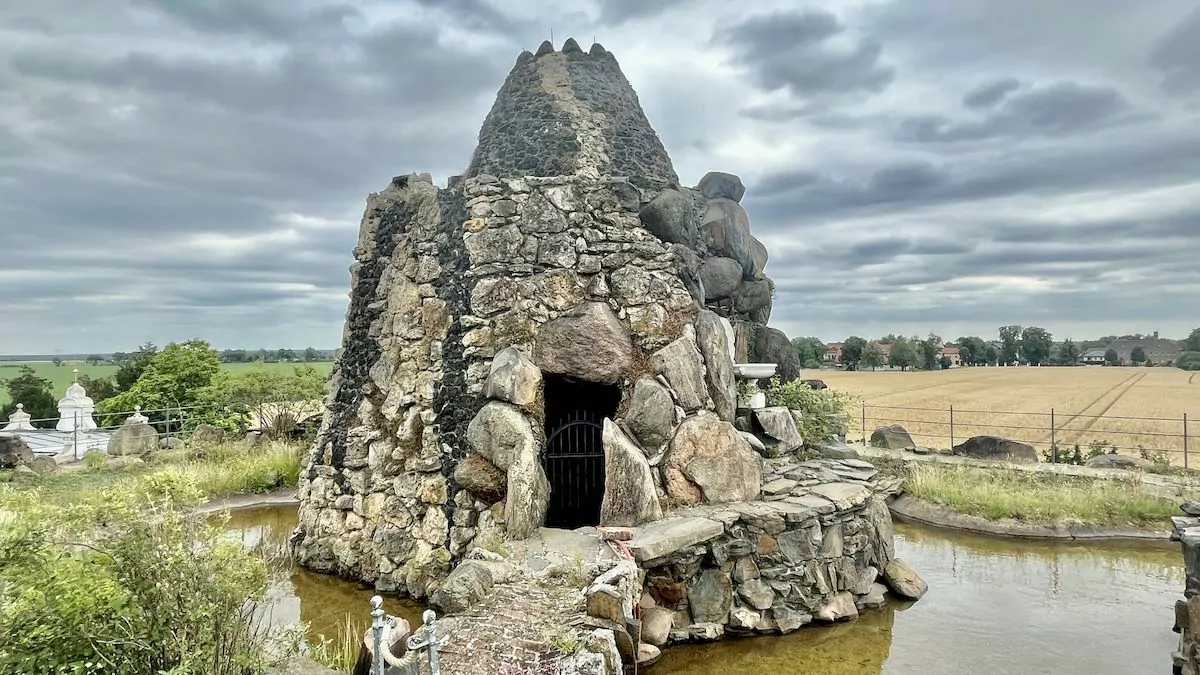
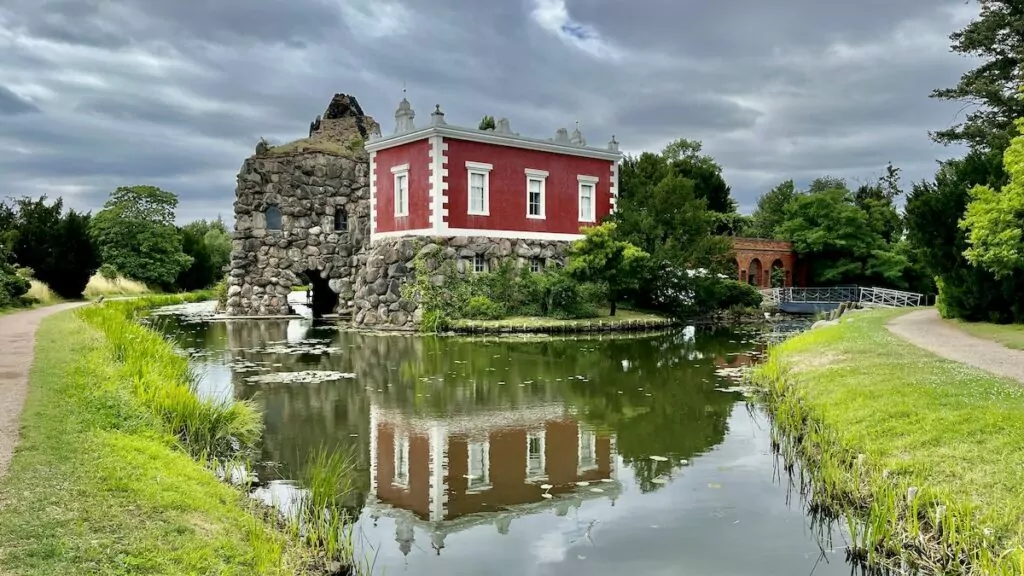
9. Getting acquainted with Luther in Wittenberg
Wittenberg, or Lutherstadt Wittenberg as it is known, is famous for the fact that the Reformation was thought to have started here when Martin Luther nailed his 95 theses to the door of the castle church. Today, several sites in the city are listed as UNESCO World Heritage Sites for their connection to this historical development.
There are plenty of historical buildings in Wittenberg, such as the castle church and the town church. It is also interesting to visit the Luther House. If you want history brought to life in a modern way, check out the "Wittenberg 360°" panoramic experience. Don't miss it:
- The castle church and the castle museum
- Luther's house
- Wittenberg 360
Parking space for motorhomes: For example, there is a small car park at Hotel Wittenberg, at Kurfürstenring 32. It's close to the city and has electricity and toilet and shower facilities, at an extra cost.
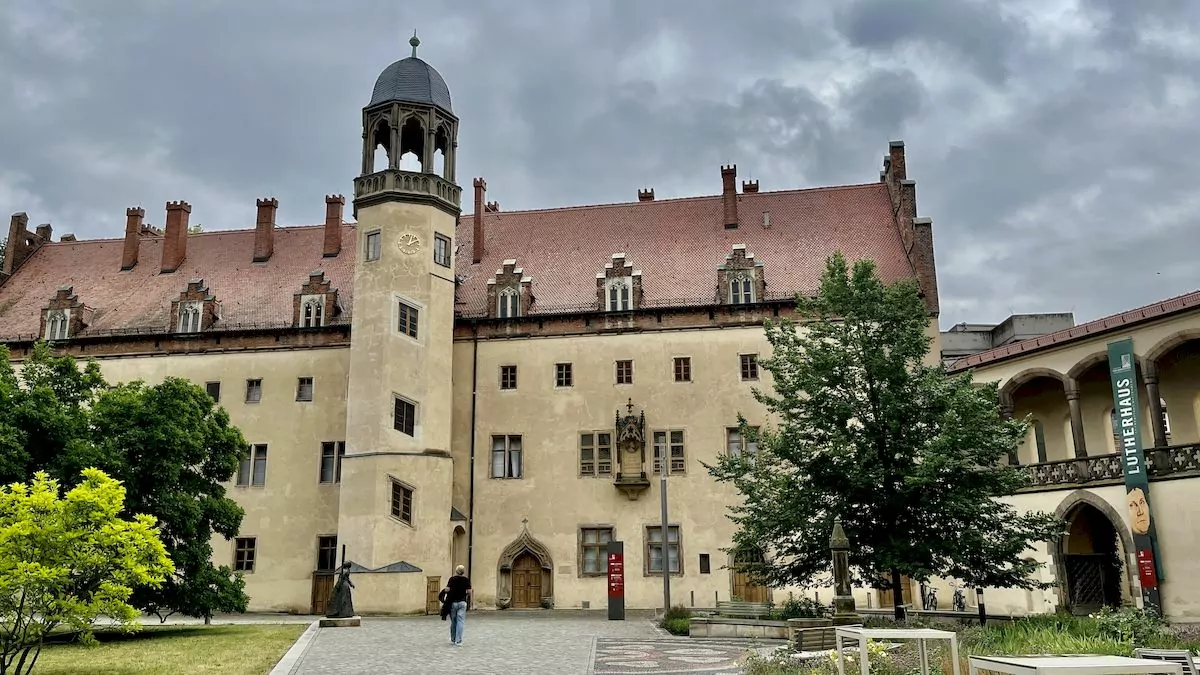
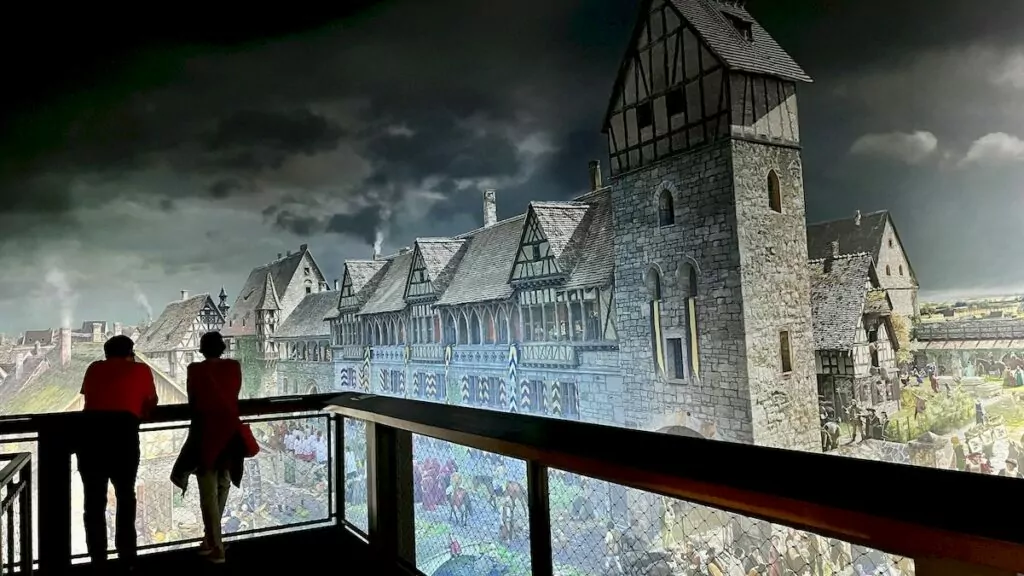
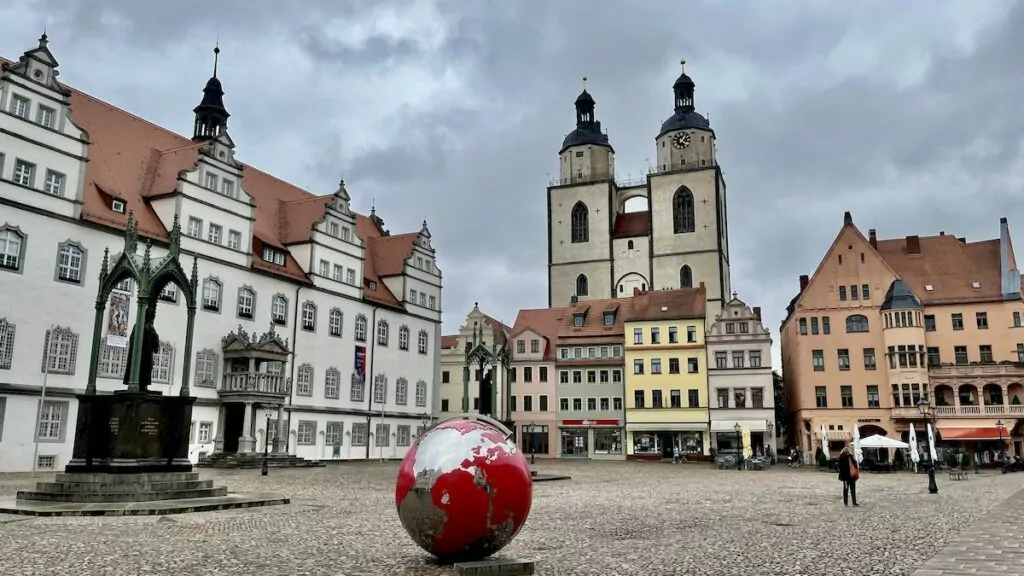
More to do in Saxony-Anhalt
Of course, there's even more to see and do in Saxony-Anhalt than what we've mentioned above. Here are some more exciting and interesting destinations that are on our bucket list:
Halle an der Saale
One of the largest cities in Saxony-Anhalt, Halle is the birthplace of composer Georg Friedrich Händel. Today you can visit the Händel-Haus to learn more about the composer. At the "Landesmuseum für Vorgeschichte" you can also see the Nebra Sky Disk, the world's oldest image of the universe and a UNESCO World Heritage Site.
Naumburg an der Saale
In Naumburg, you can check out Naumburg Cathedral, which in German is officially called Naumburger Dom St. Peter und Paul. Known for its architecture, coloured glass and sculptures, this church building is considered so unique that it is a UNESCO World Heritage Site.
Lutherstadt Eisleben
In Lutherstadt Eisleben, as in Wittenberg, you can follow in the footsteps of Martin Luther. Among other things, you can visit Martin Luther's birth house, which today also serves as a museum.
Merseburg
Merseburg is a town on the river Saale where you can see the mighty cathedral and Schloss Merseburg castle.
Europa-Rosarium in Sangerhausen
The traditional mining town of Sangerhausen is home to the Europa-Rosarium with 8,700 varieties of roses and around 80,000 rose bushes.
Wine regions Saale-Unstruut
Food and wine are an important part of the culture in Saxony-Anhalt. This includes the Saale-Unstrut region, Germany's northernmost wine-growing area. Wine has been grown here for over a thousand years and the wine region is considered one of Germany's most beautiful. Mostly white dry wines are made from grapes such as Pinot Bland, Riesling and Pinot Gris. There are various wine routes to follow in the area, and wine festivals are organised in the summer.
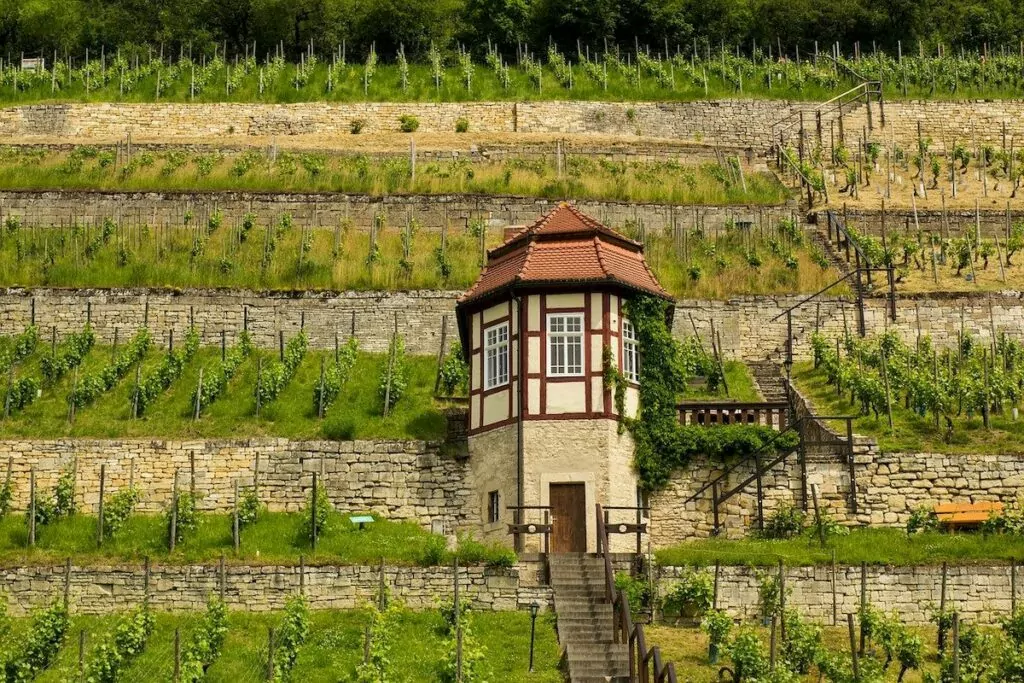
Events and things to do in Saxony-Anhalt all year round
Throughout the year, various events are organised in the federal state. Here are some tips for things to do in Saxony-Anhalt at different times:
May-September: Summer in the Dessau-Wörlitz Garden Kingdom
Concerts and cultural events are organised in the garden environment.
September: Dessau Bauhaus Festival
The festival includes performances, live music and experimental installations.
31 October: Reformation Festival in Wittenberg.
On 31 October 1517, Martin Luther nailed his tests to the castle church. Every year a series of events are organised on this special date.
Winter: Christmas markets
During Advent, all the towns in Saxony-Anhalt are decorated for Christmas and many Christmas markets are organised.
Winter: Magdeburg Light Festival
Every winter, from late November to early February, Magdeburg is transformed into a fairyland with lots of lights and light sculptures.
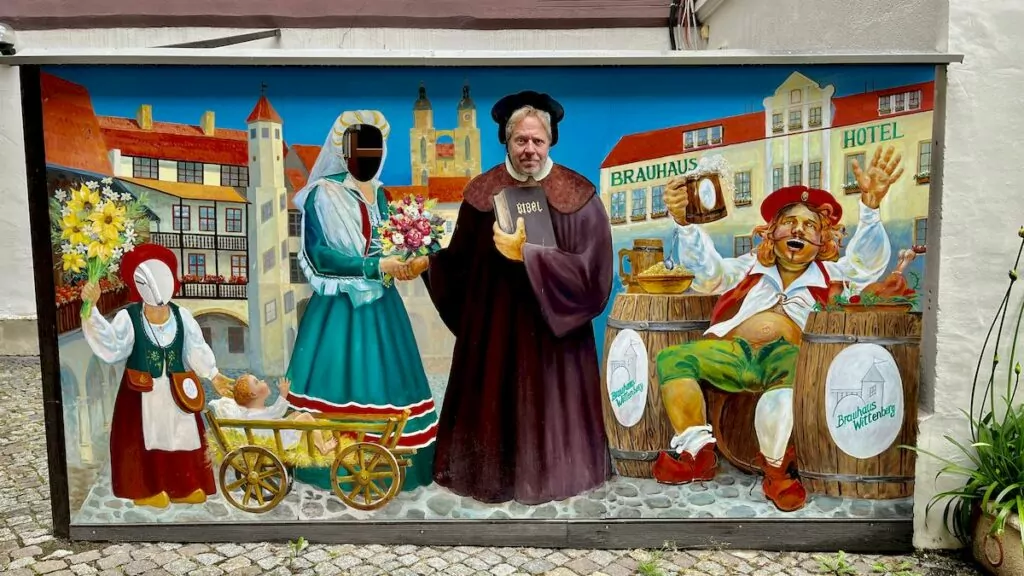
More to see and do in Germany
There is of course more to see and do around Germany. You'll find lots of different reports below.
Moritzburg Castle near Dresden - a fairytale hunting lodge
Moritzburg Castle near Dresden is a beautiful and fabulous hunting and baroque castle, well worth a visit....
Things to do in Magdeburg - 12 tips for the Ottostadt in Germany
What to do in Magdeburg, Germany? This city, sometimes referred to as the 'Ottostadt', has a...
Experience the whole world in Germany - 6 surprising locations
Experience the whole world in Germany! Germany is a large and diverse country, with many types of landscapes...
Castle Favorite in Rastatt - exclusive German summer palace
Castle Favorite in Rastatt is an exclusive 18th century summer palace in western Germany. Also...
Visit to the German town of Waren - on Lake Müritz
The German city of Waren is a picturesque little town that sits nicely on the large lake....
Lübeck, Germany - Queen of the Hanseatic League
The old Hanseatic city of Lübeck is a harbour city located in Schleswig-Holstein in northern Germany. Here you can...
Things to do in Dresden - 18 sights and experiences
What to do in Dresden, Germany? This historic city offers magnificent sights in the centre of...
North Sea coast in Germany - Husum and Sankt Peter-Ording
Our last stops during this summer's long motorhome trip were Husum and Sankt Peter-Ording on the North Sea coast of Germany....
Steinau an der Strasse - with the Brothers Grimm house
Steinau an der Strasse is a small German town that is best known for its...
Things to do in Miltenberg - 11 tips for a gem on the river Main
What to do in Miltenberg, Germany? This city is beautifully situated on the River Main...
Holiday with children or grandchildren in Germany
Thinking about a holiday with your children or grandchildren in Germany? The country offers everything from...
6 picturesque towns in Germany - along holiday routes
If you like picturesque cities, Germany is the place for you. In Germany there are plenty of...
Things to do in Bamberg - 14 tips for a lovely German town
What to see and do in Bamberg, Germany? This fine and delightful German city, whose...
Schwerin Castle - fairytale castle in northern Germany
Schwerin Castle is a beautiful fairytale castle with battlements and towers, located in northern Germany....
Motorhome travel in Germany - some reflections from the road
We're on a motorhome trip in Germany, and it's time for some reflections! How is it...
Things to do in Goslar - 11 tips for a historic town in Germany
What to do in Goslar? This German town is a charming and historic little gem,...
Rügen Island in the Baltic Sea - Germany's riviera
The island of Rügen is a beach paradise in northern Germany, with chalk-white cliffs and charming holiday resorts. We have...
Medieval and Christmas spirit in Nuremberg
We've been treated to both medieval and Christmas spirit in Nuremberg, this German city has...
The Roman Empire in Germany - 6 sites from the Roman period
The Roman Empire in Germany? Yes, indeed! Ancient Rome was a powerful empire that originated in Rome, but...
Things to do in Wittenberg - 11 tips for the Lutheran city in Germany
What to do in Wittenberg, Germany? In this city, officially called 'Lutherstadt Wittenberg'...
Active holiday in Mecklenburg-Vorpommern - 8 things to do
Did you know that Mecklenburg-Vorpommern, located on the German Baltic Sea coast, offers plenty of opportunities for...
Green Citadel in Magdeburg - playful and green living
The Green Citadel in Magdeburg is a residential building, but also a spectacular and amazing sight. This house...
Saxon Switzerland - day trip from the Czech Republic to Germany
Saxon Switzerland is a mountainous area and national park in Germany with stunning and dramatic scenery. The natural area...
German food - 25 German dishes and delicacies
German food - what is it really? We list 25 German dishes and delicacies, and tell you...
4 German themed roads we dream of
German theme roads offer ready-made routes through picturesque landscapes, often with sights lined up in a row. Wine route,...
Oranienburg, Germany - and Oranienburg Castle
We have travelled by motorhome to Oranienburg and Oranienburg Castle, just north of Berlin. Here...
What does Germany have to offer?
Last Thursday evening we went to an event at the Haymarket in Stockholm. It was the German tourist office...
Visiting Stralsund - a German little gem
Don't miss out on a visit to Stralsund if you're in north-eastern Germany. This pretty little...
Gifts in Germany - 12 must-haves to bring home
What to look for when shopping for gifts in Germany? We present 12 tips...
Passion play in Oberammergau - tradition from 1633
The Passion Play in Oberammergau, Germany, is a five-hour long and powerful dramatisation of Jesus' suffering,...
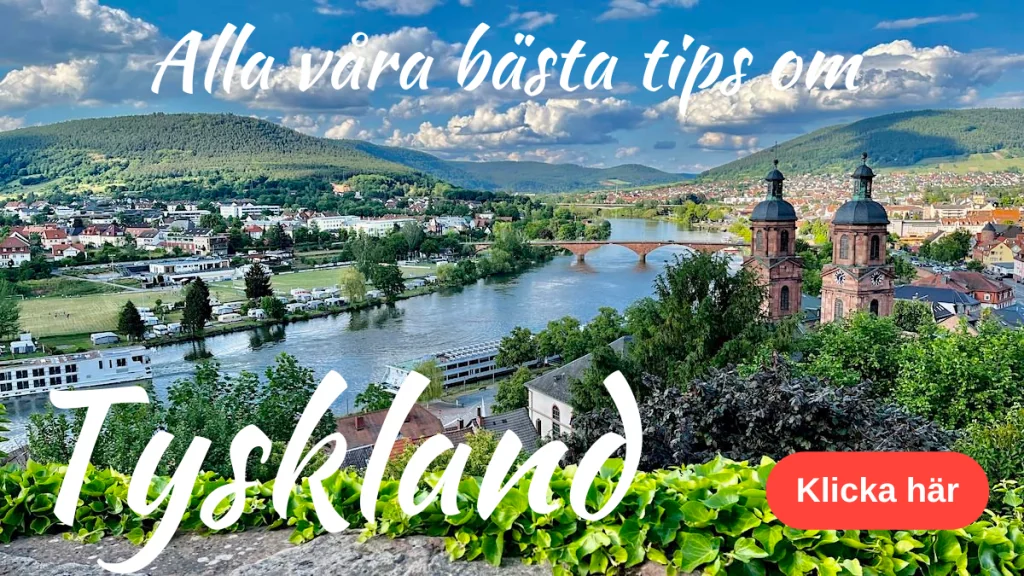
More tips for things to do in Saxony-Anhalt?
Have you visited Saxony-Anhalt in Germany? How was your experience? Do you have even more tips for things to see and do in Saxony-Anhalt?
Facts about Saxony-Anhalt
- Country: Germany
- Capital city: Magdeburg
- Other cities: Bernburg, Bitterfeld-Wolfen, Dessau-Rosslau, Halberstadt, Halle, Naumburg, Merseburg, Wittenberg, Wernigerode, Weissenfels and Stendal.
- Landkreise: Altmarkkreis Salzwedel, Anhalt-Bitterfeld, Börde, Burgenlandkreis, Dessau-Rosslau, Halle, Harz, Jerichower Land, Magdeburg, Mansfeld-Südharz, Saalekreis, Salzlandkreis, Syendal and Wittenberg.
- Residents: Around 2.2 million (2019)
- Mountainous area: Harz Mountains
- Rivers and streams: Elbe (1166 km), Saale (413 km), Havel (325 km), Weisse Elster (257 km), Unstrut (192 km), Aller (263 km), Schwarze Elster (188 km), Bode (140 km), Mulde (124 km), Ohre (110 km), Milde-Biese-Aland (97 km) and Jeetze (73 km).
- Read more: You can find more information on things to see and do in Saxony-Anhalt at federal state website on Unesco heritage and on the website of the German Tourist Board on German Local Culture.
History of Saxony-Anhalt
- Older history: The area that is now Saxony-Anhalt was part of the Holy Roman Empire, with the territories of Altmark, the Duchy of Magdeburg and the Duchy of Anhalt.
- 1816-1945: After the Napoleonic Wars, most of the area fell to the Kingdom of Prussia, where it formed the province of Saxony. Under Nazi Germany, the province was divided into two Gaue (provinces or areas): Magdeburg-Anhalt and Halle-Merseburg.
- 1945: Present-day Saxony-Anhalt was occupied by both American and Soviet troops, but was transferred to the Soviet occupation sector during the summer.
- 1947: Prussia was dissolved and the new federal state of 'Saxony-Anhalt' was created by merging most of Saxony with the Free State of Anhalt and parts of the Free State of Brunswick.
- 1949: The federal state of Saxony-Anhalt became part of East Germany.
- 1952: Saxony-Anhalt was divided into the East German bezirken (district or region) of Halle and Magdeburg.
- 1990: With the reunification of Germany, Saxony-Anhalt was re-established as a federal state, with partially new borders.


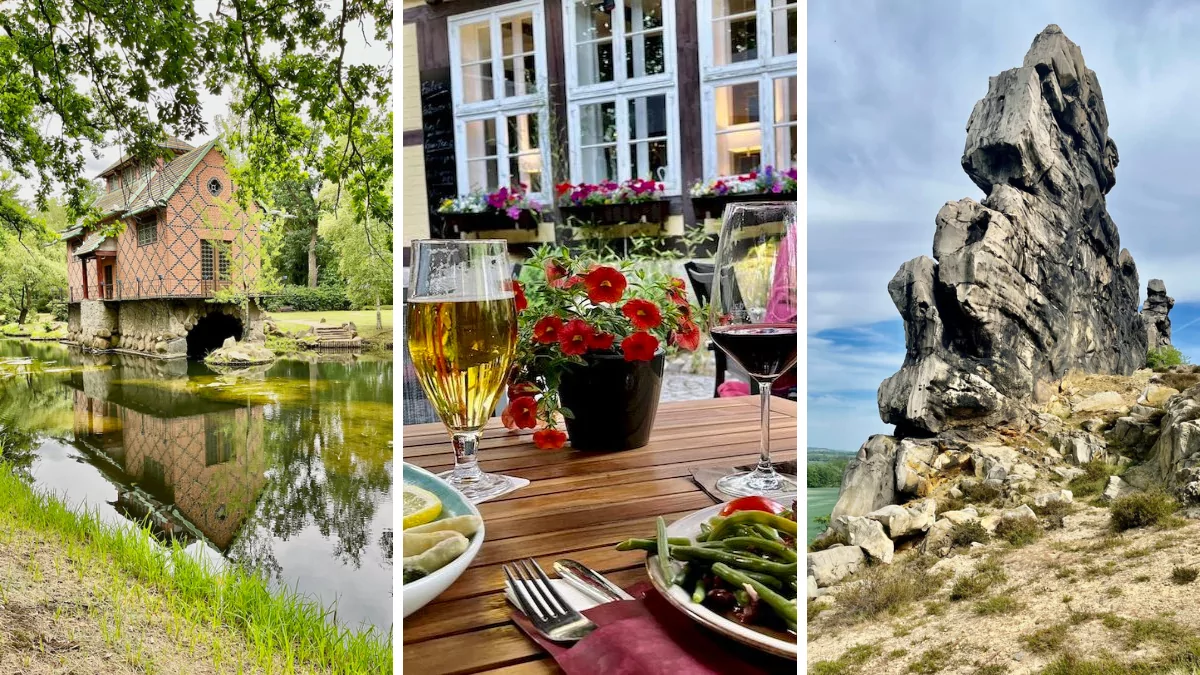






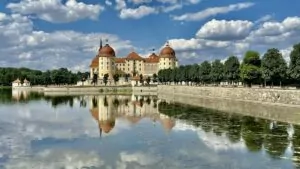
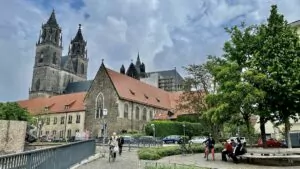
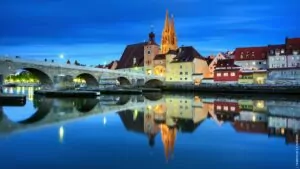
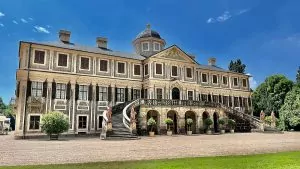
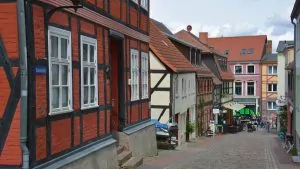
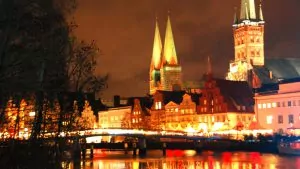
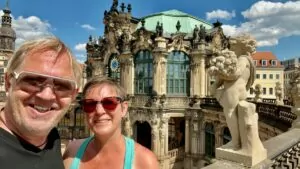
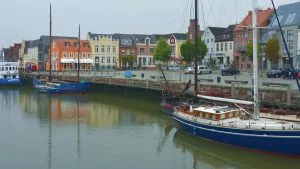
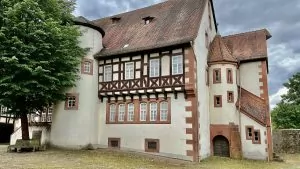
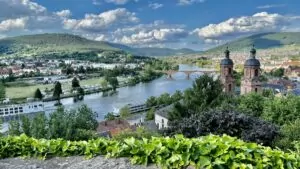
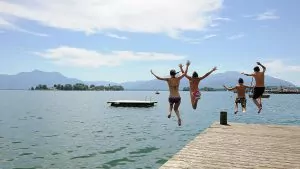
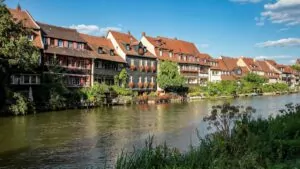
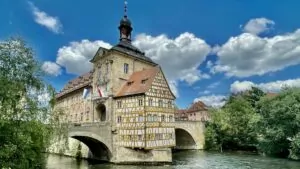
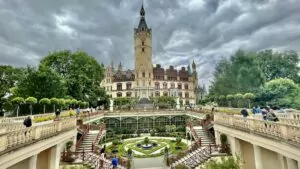
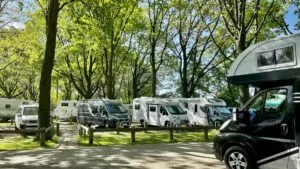
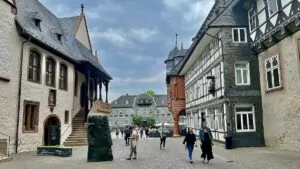
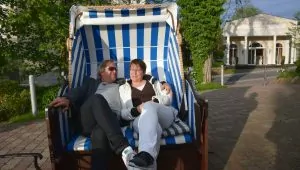
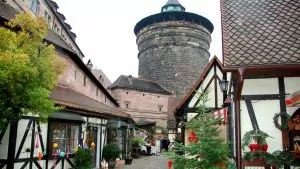
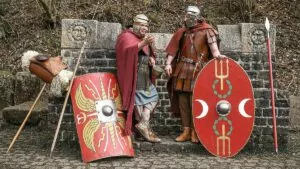
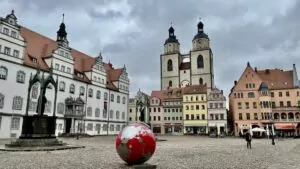
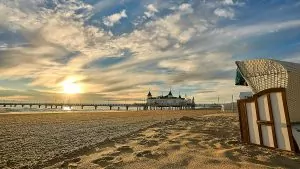
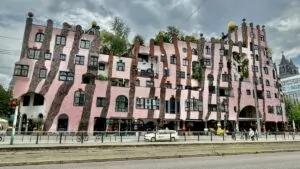
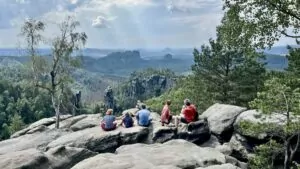

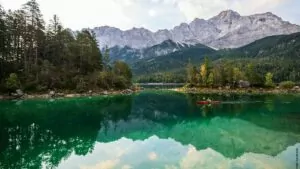
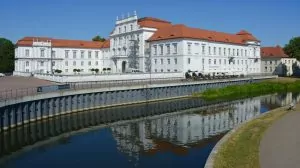
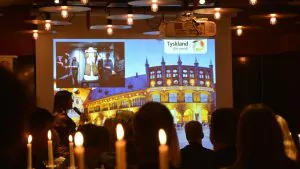
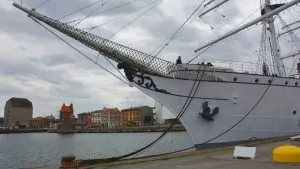
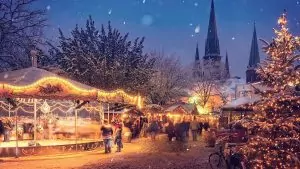
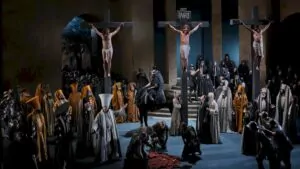
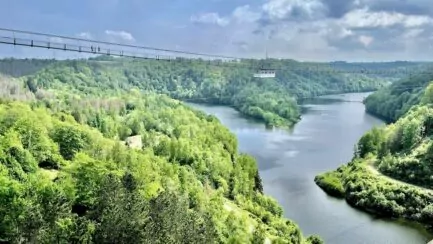
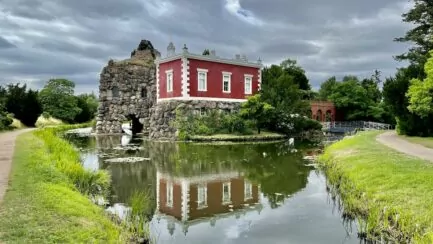
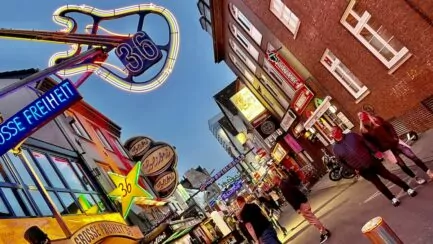
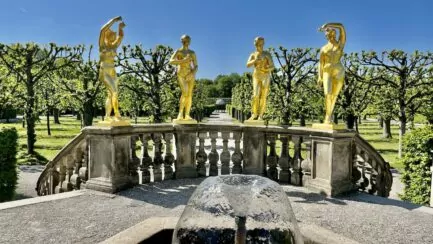
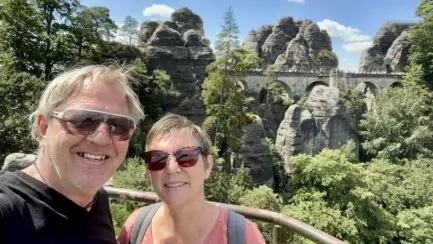
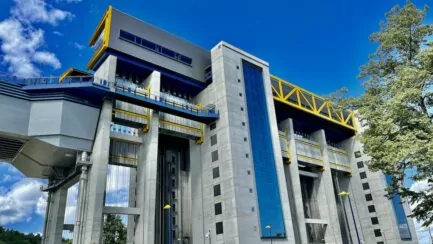



BP says:
I have worked in Munich for a while and am relatively familiar with the former West Germany, but I have never visited East Germany. So I'm glad I followed your journey in Saxony-Anhalt. I understand that the German Tourist Board wants to promote the former GDR. Because from the pictures I have seen on your site, it is very beautiful and charming. In addition, they seem to have caught up with the "refurbishment" as well.
24 August 2022 - 19:59